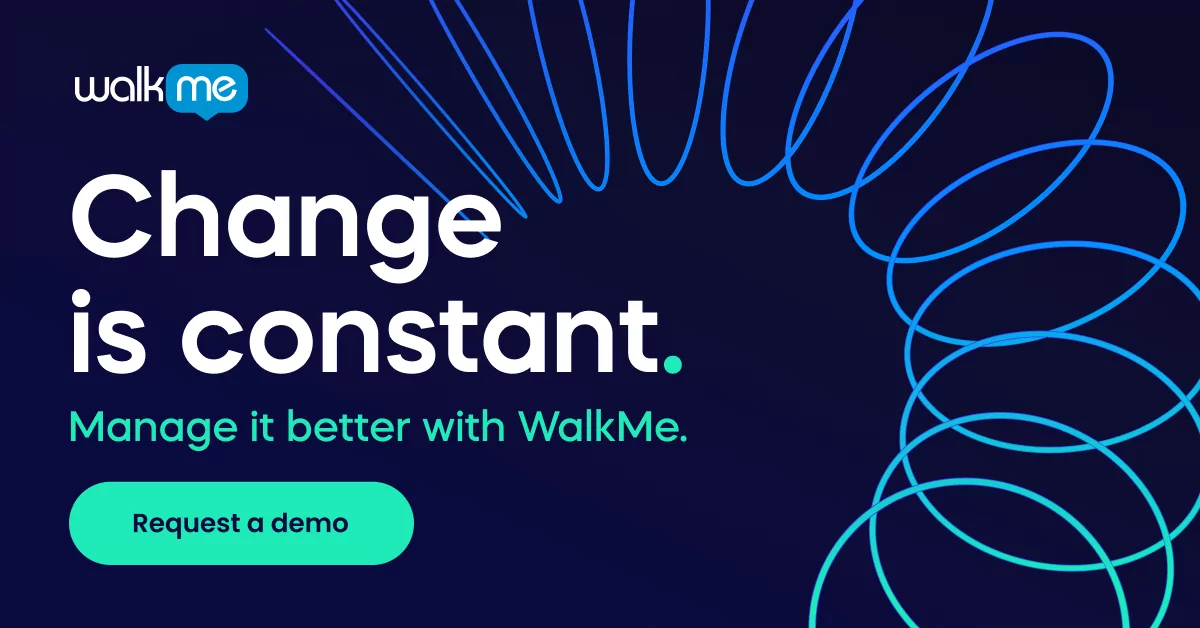“In just a few months’ time, the COVID-19 crisis has brought about years of change in the way companies in all sectors and regions do business,” starts a new McKinsey & Company article.
And it’s true. Across industries, business leaders watched potential future digital goals turn quickly into immediate current projects. For Chief Information Officers especially, the IT goals are in sharp focus and at the center of business. Gone are the days of keeping future-proofing on the backburner. The future is now.
WalkMe commissioned Constellation Research to create a survey for CIOs of Fortune 500 companies to get an inside view into challenges, decisions, and future plans. These are the 3 top ways that successful CIOs are future-proofing their organizations.
Forging ahead with Digital Transformation initiatives
You might think that the major overhaul caused by COVID would have resulted in major budget cuts for IT departments. But in reality, most CIOs maintained their budgets and staff throughout COVID.
Less than a quarter of CIOs reported a budget reduction. This statistic is a real testament to the prioritization of digital transformation initiatives in the face of crisis. Considering the immediate increased need for digital offerings, business leaders see the IT budget and overall strategy as imperative for business continuity and growth.
In fact, when asked what the top budget priorities are going into 2021, digital transformation ranked as the most important, coming before cybersecurity and even remote work infrastructure. In terms of planning for the future, leading CIOs are accelerating digital transformation plans full steam ahead.
Developing a smarter tech portfolio
Now we know that budget and staff for IT has stayed mostly stable and will be maintained for the upcoming year. But that doesn’t mean the focus is on only purchasing new software. In fact, the survey reveals that a major priority for CIOs is getting the most out of existing technologies and leaning into features that might have been overlooked or untapped previously.
A rising strategy for making the most of the enterprise tech stack is utilizing a Digital Adoption Platform. You might not be aware that a variety of common organizational challenges, like employee training, software onboarding, and overall ROI on software, are actually due to poor digital adoption.
Effective adoption of existing technology means employees and organizations can actually realize the potential value of each application, instead of skimming the surface of the promised value. As technology gets more complex, human users need an all-in-one system for navigating the maze of applications.
The highest-ranking priorities for the tech stack among the surveyed CIOs are increasing automation, assessing the existing portfolio for cost-effectiveness, and leveraging untapped and high leverage features. WalkMe’s DAP streamlines all of those goals, benefitting employees, customers, and ultimately, the business.
Approach IT as a strategic business player
Even before COVID arrived on the scene, IT leadership was becoming more strategic. As the CIO role continues to rise, wise leaders are recognizing the need for collaboration among department heads, with technology at the helm of mutual success.
The greatest challenge among CIOs is currently enabling the demands of a remote workforce. This sudden change for most organizations means that the most agile, strategic, and team-oriented IT leaders will excel. Never before has the relationship between HR and IT been this paramount.
More than 60% of CIOs report that the top challenge in terms of employees since COVID began, is the mental, psychological, and physical well-being of workers on a large scale. This pandemic has rocked humanity to its core, and strategic IT leaders have an opportunity to play a leading role in guiding us towards a better future in which technology is a helping hand, and not a bottomless pit.
To read the full CIO survey, you can find it here.


